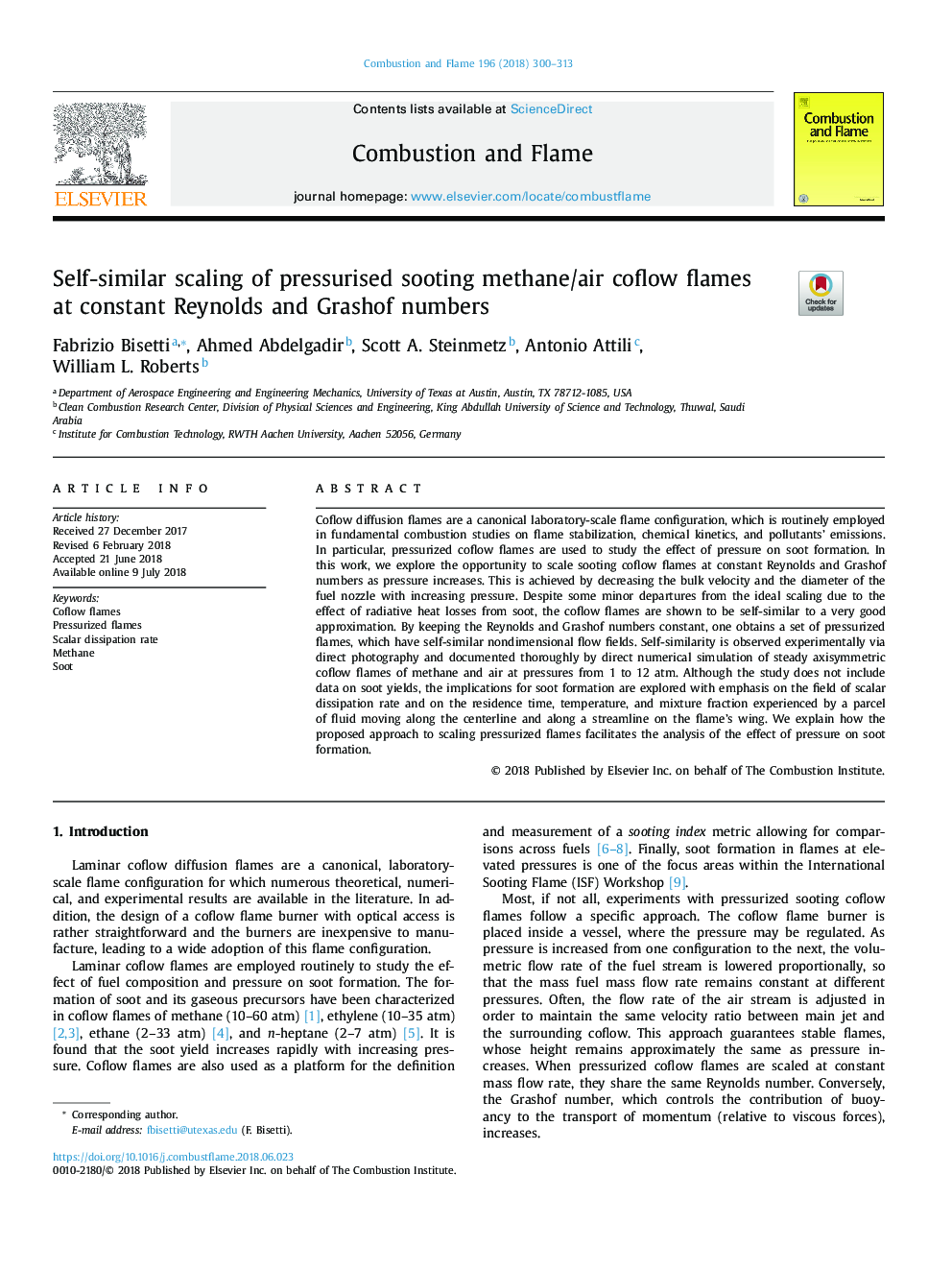| Article ID | Journal | Published Year | Pages | File Type |
|---|---|---|---|---|
| 6593377 | Combustion and Flame | 2018 | 14 Pages |
Abstract
Coflow diffusion flames are a canonical laboratory-scale flame configuration, which is routinely employed in fundamental combustion studies on flame stabilization, chemical kinetics, and pollutants' emissions. In particular, pressurized coflow flames are used to study the effect of pressure on soot formation. In this work, we explore the opportunity to scale sooting coflow flames at constant Reynolds and Grashof numbers as pressure increases. This is achieved by decreasing the bulk velocity and the diameter of the fuel nozzle with increasing pressure. Despite some minor departures from the ideal scaling due to the effect of radiative heat losses from soot, the coflow flames are shown to be self-similar to a very good approximation. By keeping the Reynolds and Grashof numbers constant, one obtains a set of pressurized flames, which have self-similar nondimensional flow fields. Self-similarity is observed experimentally via direct photography and documented thoroughly by direct numerical simulation of steady axisymmetric coflow flames of methane and air at pressures from 1 to 12 atm. Although the study does not include data on soot yields, the implications for soot formation are explored with emphasis on the field of scalar dissipation rate and on the residence time, temperature, and mixture fraction experienced by a parcel of fluid moving along the centerline and along a streamline on the flame's wing. We explain how the proposed approach to scaling pressurized flames facilitates the analysis of the effect of pressure on soot formation.
Keywords
Related Topics
Physical Sciences and Engineering
Chemical Engineering
Chemical Engineering (General)
Authors
Fabrizio Bisetti, Ahmed Abdelgadir, Scott A. Steinmetz, Antonio Attili, William L. Roberts,
